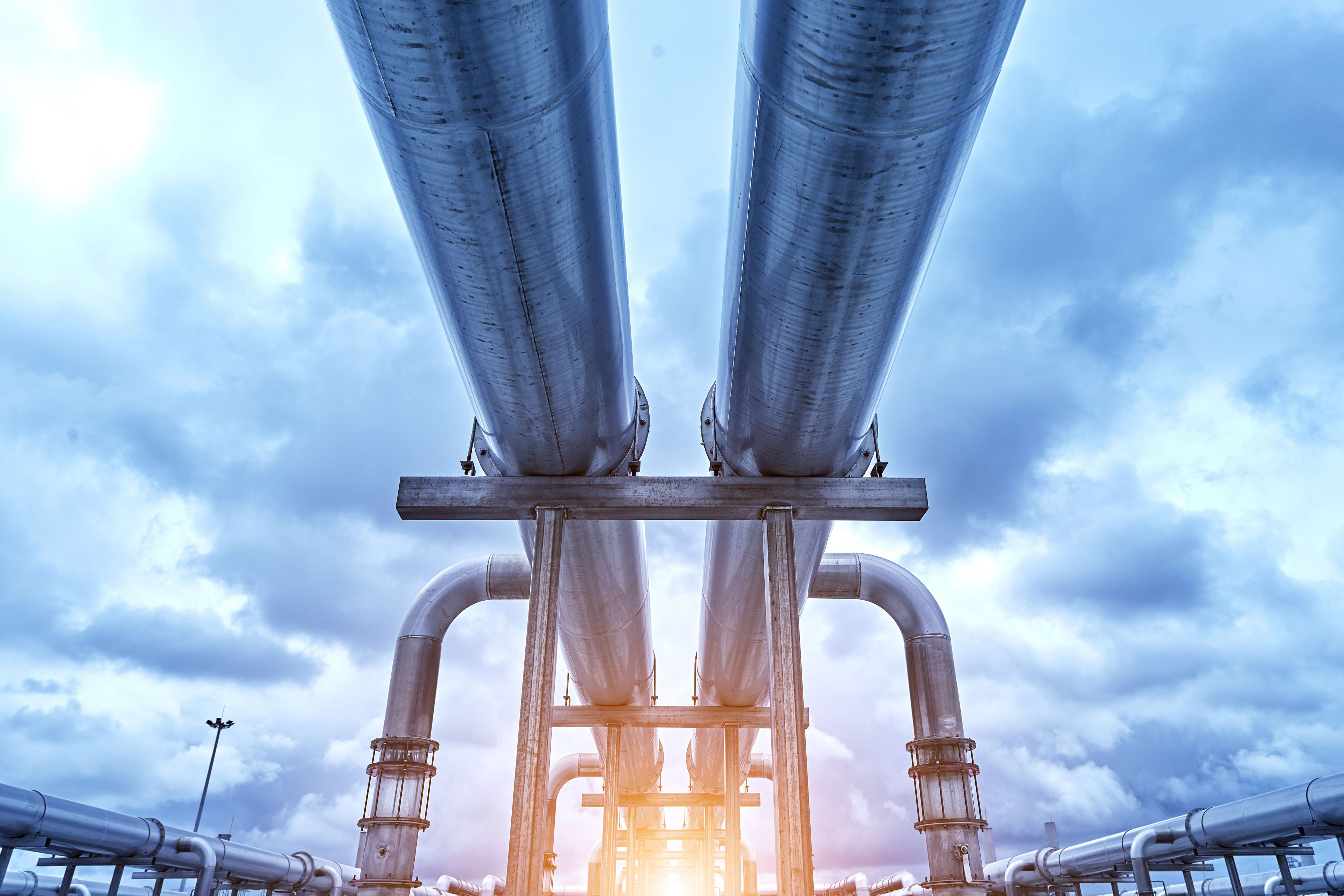Clean Energy Fuels Corp. (CLNE +1.75%) announced fourth-quarter and fiscal 2016 results on March 7 and reported continued growth in natural gas sold, a strong year of station construction, and lower expenses and capital spending for the third consecutive year.
Let's take a closer look at the company's performance. There are a few key things investors should watch closely that pertain to Clean Energy's ability to generate positive cash flow and earnings going forward.

Image source: Clean Energy Fuels Corp.
A closer look at the numbers
Clean Energy's fourth-quarter results:
| Metric | Q4 2016 | Q4 2015 | Change (YoY) |
|---|---|---|---|
| Revenue | $101.8 | $119.3 | (14.7%) |
| Net income (loss) | ($4.1) | ($50.4) | N/A |
| Earnings (loss) per share | ($0.03) | ($0.54) | N/A |
| Gallons delivered | 84.1 | 78.3 | 7.4% |
Revenue and net income in millions. Data source: Clean Energy Fuels Corp.
Fiscal year 2016:
| Metric | 2016 | 2015 | Change (YoY) |
|---|---|---|---|
| Revenue | $402.7 | $384.3 | 4.8% |
| Net income (loss) | ($13.7) | ($135.5) | N/A |
| Earnings (loss) per share | ($0.10) | ($1.47) | N/A |
| Gallons delivered | 329.0 | 308.5 | 6.6% |
Revenue and net income in millions. Data source: Clean Energy Fuels Corp.
A couple of takeaways here. First, the obvious thing to note is that Clean Energy significantly reduced its losses from 2016 to 2015. A closer look at the operating statement, as well as comments from management, indicates that three things drove this improvement:
- Higher fuel volumes.
- Higher margins.
- Lower expenses (mainly SG&A and interest).
It's also notable that the company reported a revenue decline in the fourth quarter, but this was related to how the company received volumetric excise tax credits (VETCs) in 2015, which were received for the full year in the fourth quarter of 2015, as opposed to being received quarterly in 2016. The company provided a breakout of revenue by source in its SEC filing:
| Revenue | Q4 2015 | Q4 2016 | Change | Fiscal 2015 | Fiscal 2016 | Change |
|---|---|---|---|---|---|---|
| Volume-related | $64.8 | $73.0 | 13% | $260.6 | $283.9 | 9% |
| Compressor sales | $13.1 | $4.9 | (63%) | $54.5 | $27.3 | (50%) |
| Station construction sales | $10.3 | $16.9 | 64% | $37.8 | $64.9 | 72% |
| VETC (alternative fuel tax credits) | $31.0 | $7.0 | (77%) | $31.0 | $26.6 | (14%) |
| Other | $0.1 | -- | N/A | $0.4 | -- | N/A |
In millions. Data source: Clean Energy Fuels Corp.
The takeaway from this data is that Clean Energy's two core businesses -- fuel sales/station maintenance and station construction -- both delivered solid revenue growth in the quarter and full year, while the secondary compressor manufacturing business continues to face weak global demand.
Adjusting the results for a major non-cash item
Results according to generally accepted accounting practices (GAAP) are critically important, as they both ensure a standardized report of financial results across companies and encompass all the financial tools a company uses to report its results. For this reason, it's a good idea to look at both the GAAP results and non-GAAP results that exclude some non-cash expenses.
Depreciation and amortization is a major expense for Clean Energy, tied to its big investments in infrastructure in recent years. The reason it's good to look at the company's results excluding these expenses is twofold:
- As non-cash expenses, depreciation and amortization in the GAAP results can mask positive cash flows.
- The assets being depreciated are long-lived in nature and should far outlast their depreciation schedule.
| Metric | Q4 2016 | Fiscal 2016 |
|---|---|---|
| Net income (loss) | ($3.9) | ($12.2) |
| Depreciation/amortization | $14.6 | $59.3 |
| Net income excluding depreciation/amortization | $10.7 | $47.1 |
In millions. Data source: Clean Energy Fuels Corp.
To be clear, this isn't an approximation of cash flows, as there are still non-cash items within the company's expenses. But it does offer what is, in my analysis, a clearer look at its operating results. On a cash-flow basis, Clean Energy reported $46.1 million in operating cash flows in 2016 -- a big jump from 2015's $12.1 million operating loss.
One thing to keep an eye on
Over the past two years, Clean Energy has gained a significant amount of incremental revenue from sales of renewable identification number (RIN) and low-carbon fuel standard (LCFS) credits, related to its renewable biomethane business. This has been a major contributor to revenue and cash flow growth:
| Metric |
FY 2014
|
FY 2015
|
FY 2016
|
|---|---|---|---|
|
RIN credits
|
$2.1
|
$10.3
|
$29.0
|
|
LCFS credits
|
$3.5
|
$8.1
|
$20.0
|
|
Total
|
$5.6
|
$18.4
|
$49.0
|
In millions. Data source: Clean Energy Fuels Corp.
However, the company put this in its 10-K filing:
Although we expect to continue to generate revenue relating to the sale of RINs and LCFS credits from our continued sales of our Redeem RNG [renewable natural gas] vehicle fuel, the amount of revenue we would receive from the sale of such credits will decrease if the existing RNG assets are sold in the asset sale as planned, which would adversely affect our results of operations and reduce our effective price per gallon in future periods as compared to 2016. ... Further, the markets for RINs and LCFS credits have historically been volatile, and the prices for these credits have been subject to significant fluctuations. Additionally, the value of RINs and LCFS credits may be adversely affected by any changes to the federal and state programs under which such credits are generated and sold.
In short, there will be a negative impact from Clean Energy's agreement to sell its RNG production facilities to BP. CFO Bob Vreeland said that management expected gross margin per gallon to be between $0.25 and $0.29 "on a go-forward basis," down from the $0.33-$0.36 per gallon the company ranged over 2016.
So what does this mean? It's not a stretch that management made the decision that $165 million today (that is, $155 million in cash and $10 million in assumed debt) from selling off these assets was worth more to the company to further improve the balance sheet than is the future value of RIN and LCFS credits. This is particularly true since the company still retains access to the RNG from these facilities to sell to its customers.
Looking ahead: Cost containment and deleveraging continue
2016 marked solid improvements across Clean Energy's business. SG&A expenses declined for the third consecutive year. Capital expenditures fell by half from 2015, and the 2017 capital spending budget is consistent with 2016 levels, even as the company continues to grow its station count and expand fuel volumes. The company also paid down over $254 million in debt -- which will cut cash interest expense $18 million in 2017, though it did issue a significant amount of new stock to pay for much of that debt.
And management isn't stopping there, having acquired $25 million in debt from co-founder T. Boone Pickens in February, and the recent $155 million cash (and $10 million in assumed debt) deal with BP to further pay down debt. By the end of the first quarter, the company's long-term debt could conceivably be cut from $312.4 million at year's end to $120 million. Doing so would result in a further incremental reduction in interest expense of almost $10 million.
Add it all up, and Clean Energy could conceivably spend $40 million less on interest and operating expenses in 2017 than it did only two years ago, all while delivering more fuel and building more stations. The biggest question will be if its cost-cutting efforts and volume growth will be enough to offset the potential loss of revenue from VETC and energy credits related to RNG going forward.





